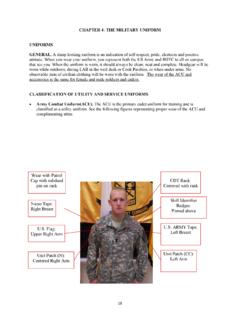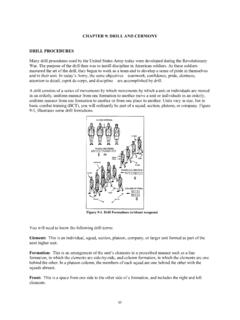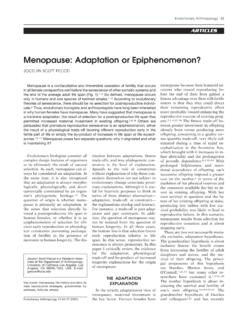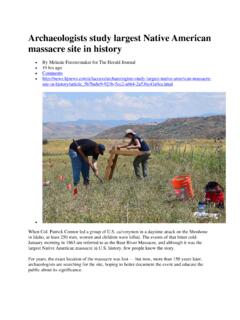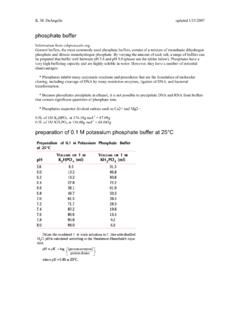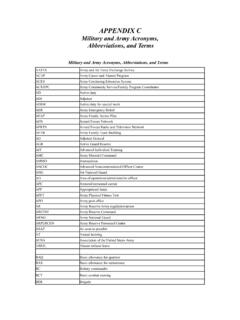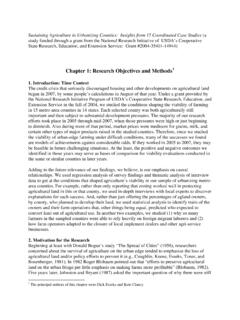Transcription of CHAPTER 5: MILITARY CUSTOMS & COURTESIES GENERAL …
1 CHAPTER 5: MILITARY CUSTOMS & COURTESIES GENERAL MILITARY courtesy is simply the display of good manners and politeness in dealing with other people. MILITARY courtesy conveys respect from both subordinate and senior to each other. HISTORY OF THE MILITARY SALUTE Men of arms have used some form of the MILITARY salute as an exchange of greeting since the earliest times. It has been preserved and its use continued in all modern armies which inherit their MILITARY traditions from the age of chivalry. The method of rendering the salute has varied through the ages, as it still varies in form between the armies of the world today. In the age of chivalry the knights were all mounted and wore steel armor which covered the body completely, including the head and face.
2 When two friendly knights met, it was the custom for each to raise the visor and expose his face to view of the other. This was always done with the right hand, the left being used to hold the reins. It was significant gesture of friendship and confidence, since it exposed the features and also removed the right hand - the sword hand - from the vicinity of the weapon. Also, in ancient times the freemen (soldiers) of Europe were allowed to carry arms; when two freemen met, each would raise his right hand to show that he held no weapons and that the meeting was a friendly one. Slaves were not allowed to carry arms, and they passed freemen without the exchange of a greeting. In the Middle Ages, gentlemen often went about clothed in heavy capes under which swords were carried. Upon meeting a friend, the cloak was thrown back by raising the right arm, thus disclosing that the right hand was not on the sword hilt.
3 The civilian counterpart of the salutes manifested in various ways such as raising the hand when greeting a friend, tipping the hat when meeting a lady, and using a sign of recognition between lodge members. This sign is always exchanged as a greeting between friends and is given willingly. The MILITARY salute is given in the same manner - that of pride in giving recognition to a comrade in the honorable profession of arms. The knightly gesture, of raising the hand to the visor came to be recognized as the proper greeting between soldiers, and was continued even after modern firearms had made steel body armor a thing of the past. The MILITARY salute is today, as it seems always to have been, a unique form of greeting between MILITARY professionals. RENDERING THE HAND SALUTE When on campus and in uniform, cadets will salute all cadet officers and cadre officers of all services.
4 It is appropriate to accompany the salute with a word of greeting, for example, Good morning, sir. Below are examples of situations where you would salute: When walking outdoors in uniform and you approach a cadet officer or cadre officer. When outdoors in uniform and when the American Flag is being raised or lowered. When in uniform, a cadet reporting to an officer in his office, will make his presence at the door known, enter when permission is given, come to attention, salute and state his/her name. 18 Example: Sir, Cadet Jones reports. He/she will remain at the position of attention until given At ease. Upon completion of his business, the cadet will come to attention, salute, do an about face and leave. When an officer (to include cadet officer in uniform) approaches a uniformed group outside, the first cadet to recognize the officer will call Attention and all cadets will salute and remain at attention until given At ease , Rest , Carry on , another command, or until the officer passes.
5 If cadets are performing a work detail, only the person in charge will come to attention and salute. The detail will continue to work. When in formation and an officer (to include cadet officer in uniform) approaches, the person in charge calls the formation to attention and salute. Salutes are not rendered in the following areas or cases: Indoors, salutes are not exchanged except when reporting to a senior officer. When actively engaged in sports or in the middle of training. When operating a vehicle. USE OF SIR and SERGEANT All cadre and cadet officers are addressed as SIR / MA AM . As a GENERAL rule, Sir / Ma am is used in speaking either officially or socially to any senior. The word is repeated with each complete statement. Yes and No should always be accompanied with Sir / Ma am.
6 All NCOs will be addressed as Sergeant with the exception of the First Sergeant and Sergeant Major. They will be addressed by their title. THE SENIOR S PLACE OF HONOR Another ancient MILITARY custom dictates that you should always walk or sit to the left of your seniors. For centuries men fought with swords, and because most men are right handed, the heaviest fighting occurred on the right. The shield was on the left arm, and the left side became defensive. Men and units who preferred to carry the battle to the enemy, and who were proud of their fighting ability, considered the right of a battle line to a post of honor. Therefore, when an officer walks or sits on your right, he is symbolically filling the post of honor. ATTENTION When an officer enters a room occupied by enlisted personnel or cadets, the room is called to attention.
7 It is not proper, however, for officers to follow this custom at the approach of a senior officer. The question then is how to get officers to attention without the command. Generally, this is accomplished by the individual officers assuming the position of attention when appropriate or one officer announcing the presence of the senior and the other officers then assuming the position of attention. For example, if the classroom were filled only with cadet officers and the PMS entered the room, one of the cadet 19officers would announce, Gentlemen, the Professor of MILITARY Science. likewise, when speaking to an officer, soldiers and cadets will stand at attention until instructed otherwise by the officer. PARADE REST Like Attention , Parade Rest is a form of respect given to NCOs by those junior in rank.
8 When a Senior NCO enters an area of junior enlisted soldiers or cadets, the room is called to at ease . All personnel should immediately go to the position of stand at-ease until told to carry-on . Likewise, when speaking to an NCO, soldiers junior in rank or cadets, will maintain the position of parade rest until instructed to stand at ease , at ease , or rest /relax. COURTESY TO THE FLAG AND NATIONAL ANTHEM When the National Anthem or its counterpart in field music, To The Colors is played, when the flag is passing in a parade, when the flag is raised at reveille and when the flag is lowered at retreat, cadets in uniform should face the flag (or music if the flag is not visible) and render a hand salute. FLAGS The flag of the United States, national colors, and national standard are not dipped by way of salute or compliment.
9 An exception to this is the rule followed by naval vessels when, upon receiving a salute of this type from a vessel registered by a nation formally recognized by the United States, the compliment must be returned. The organizational colors or standard may be dipped in salute in all MILITARY ceremonies while the National Anthem, "To the Colors", or a foreign national anthem is being played, and when giving honors to the organizational commander, an individual of higher grade including foreign dignitaries of higher grade, but not otherwise. The Army flag is considered an organizational color and is also dipped when the National Anthem, "To the Colors", or a foreign national anthem is being played. It is also dipped when giving honors to the Chief of Staff of the Army, his direct representative, or an individual of higher grade, including a foreign dignitary of equivalent or higher grade, but in no other case.
10 "Flag" is a GENERAL descriptive term for a cloth device with a distinguishing color or design, which has a special meaning or serves as a signal. The flag of the United States, the white flag of truce, and weather flags are examples. In the MILITARY service, the color is a flag of a dismounted unit; an ensign is a national flag; a pennant is a small triangular flag usually flown for identification of a unit; a standard is a flag of a mounted unit; and a guidon is a swallow-tailed flag carried by Army units for identification, especially in drills and ceremonies. THE FLAG OF THE UNITED STATES The flag of the United States is displayed at all Army installations. No more than one national flag is flown at any one time. The flag of the United States represents the Union the 50 stars on a field of 20blue.
